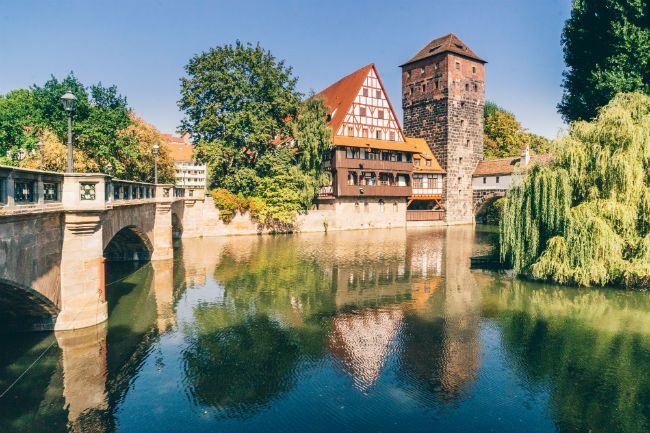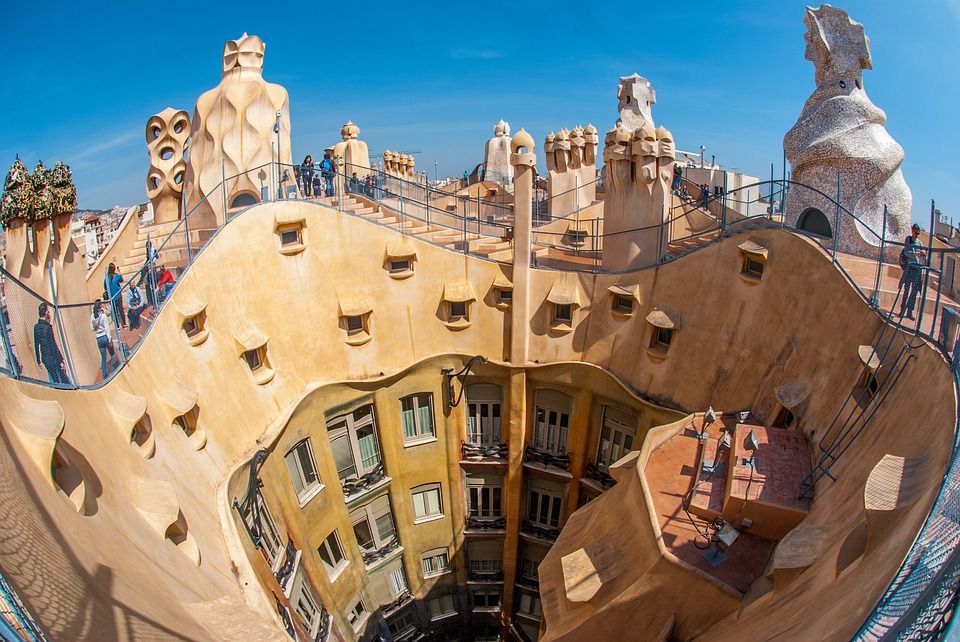
The Philadelphia Inquirer Our guide Krista held up a long, three-inch-wide ribbon of bull kelp, a sea algae, and squeezed open the bulbous end. “See the little dark spots. Crickets have decided to go inside and feed.”She told us that this type of kelp could grow up to five feet in a day and that conservationists had placed it at various spots to attract sea otters that have been disappearing from Puget Sound. Read Article

Inquirer.com In the past, I’d cringe when I heard the word cruise. I had visions of crowds, busyness, lines, brassy nightclub entertainment I dislike, stores, restaurants, and no time to reflect on the surroundings. I preferred traveling on the glasslike water of canals and rivers. “You don’t have to go on one of those big cruise ships,” said my friend Beth. “My ship had 148 passengers, and we were able to do lots of animal watching — just what you loved on your safari trip.” Emilie C.

Go World Travel Magazine Sipping the smoky beer rauchbier in a Bamburg cafe, sampling sausages and gingerbread on the Nuremburg town square, peering up at castles on the Rhine. Such were our days on a recent Viking Cruise from Prague to Paris. Viking’s “Cities of Light: Prague to Paris” cruise along the Main, Rhine and Moselle rivers enabled us to soak up European history without even realizing it. When we were not moving along on glasslike water, we strolled through ancient neighborhoods in Germany’s small cities. Read Article

On a recent trip to France, I was finally going to see Monet’s house and gardens, one of the most popular tourist sites in France. Monet lived there for many years with his large family, and often entertained artists, who came to set up easels and sketch. In fact, he is said to have started the “painting in plein air” movement. Over time, he put considerable effort to rebuilding the flower plots and bushes so that there would be the appearance of layers. As our visit drew closer, I began to think of “what-ifs.” Would it be pouring rain on the day we had chosen an excursion there? It was late October. Could a sudden frost kill the flowers in one of the world’s most highly acclaimed botanic gardens before we got there? Though it was misty—hood rather than umbrella weather and overcast for better photos—the colors of fall were in full splendor when we arrived.. Willow, Japanese cherry, apple, and maple trees hovered over shorter plants. Daisies, begonias, and dahlias, and other varieties stood up in bright yellows, purples, and reds. Bushes and trees had been planted to give the effect of levels of contrasting greens. The Nymphaeas, or water lilies, so prolific in his paintings, had slightly hoodwinked buds in their centers, as if ready for winter. However, they still floated elegantly in the streams and ponds. Monet had spent many years designing the acres of gardens, and at one point had even diverted a stream so the lilies would be accentuated. “You are seeing Giverny at an adult height,” said the guide as we entered the long pathway toward the house.”If you were to come in the spring, when the flowers have just been planted, everything would be on a child’s level.”

Discover Walking Tours, a tip supported company, offers three options: 1) Gaudi buidlings in Eixample; 2) Ramblas and the Gothic area; 3) and Picasso’s Barcelona in The Born, the medieval section. During our March trip to Barcelona we took all three, and found they were a great orientation to the city. The guides were knowledgeable and entertaining, and it was fun to converse with other travelers. On our first day we took the Gaudi Tour in the Eixample section. Eixample was built in the second half of the 18th century, when the city needed to expand north to accommodate an influx of people coming from small villages. Our guide met us at Batllo, Gaudi’s flamboyant house on Passeig de Gracia, one of the major avenues running north and south. Batllo is bedecked with jewels, actually shards of stone from ceramic factories in the surrounding mountains, has window panes in the shape of bones, and an embellished dragon, who’s been killed by St. George, lying on the roof. Our guide explained that the site had been owned by the Guelles, one of the prosperous families at the turn of the century. She explained how Gaudi embellished houses that were the plainer, more typical style. Had we passed by on our own we would not have noticed those outside details, nor would we have gotten tips on images to look for when we returned for a visit on our own. Casa Medea next door had almond shaped windows; its owner, a chocolate maker, was was aptly nicknamed “Mr. Almond.” As we wove around the back of Battlo and crossed back to La Pedrera, another Gaudi House on Passeig de Gracia, we learned more about the architecture of the city, the differences between Spanish and Catalan languages, and the corners with prominent beer and wine bars. Pedrera had balconies like waterways flowing into the rocks, and chimneys like masked men (see picture at upper left). At the Diagonal Zero subway stop our guide pointed north and told us not to miss Guelle Park with its mosaic terraces and the Gaudi Museum. We went down under, got on the train, and exited at the next stop: Sagrada Familia, Gaudi’s phantasmagorical cathedral that may be finished within the next twenty years. At the end of the tour, we could walk east to the water, walk west to Passiag de Gracia, or north to Guelle Park. The map was making sense now. The Ramblas and Gothic area and the Picasso Walk through The Born were equally informative and fun. We may not have found the Museum of the City, the ancient Roman city of Bacino, which is located under the main cathedral, had it not been for the walks. It’s by far one of the best archaeological museums I’ve ever been to. https://www.discoverwalks.com/tour/city/barcelona-walking-tours/ (NOTE: Make sure to tip because that is how the company keeps going. Other walking tours run between $10-$15 and upwards.

